
As the world wrestles with the threat of climate change, the push for environmentally sustainable solutions in every field is intensifying. Agriculture is no exception. By incorporating renewable energy, this sector is not only responding to environmental challenges but also shaping a more resilient future for food production.
As we enter this new era, farms aren't just places where food is grown; they're evolving into energy production centers where solar panels shade crops while simultaneously generating power and wind turbines stand sentinel over fields, turning the breeze into energy. Renewables are helping reduce dependency on fossil fuels, lowering input costs for agricultural production.
This union of farming and renewable energy represents a significant paradigm shift. It signifies a holistic approach where feeding the global population and protecting our environment are not mutually exclusive but work hand in hand. Let’s look a little deeper and discover how renewable energy is supporting agriculture but how it revolutionizing this sector worldwide.
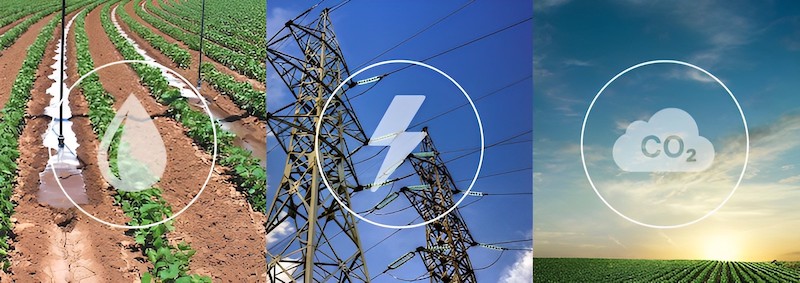
The implementation of renewable energy on farms plays a critical role on our journey towards sustainability and environmental stewardship. It provides a way to reduce the carbon footprint of agriculture while ensuring the sector remains productive and efficient.
By utilizing renewable energy sources, farms can become self-sufficient, reducing their reliance on the grid and fossil fuels. This not only improves their sustainability but also insulates them from fluctuating energy prices and supply disruptions.
Renewable energy technologies can power farm machinery, provide heating and cooling systems, and enable precision farming techniques. These benefits highlight the transformative potential of renewable energy in agriculture and the role they can play in sustainable farming.
Renewable energy sources like solar power, wind energy, bioenergy, hydropower, and geothermal energy can significantly reduce greenhouse gas emissions on a farm and lower cost of food production.
Solar power's integration into the agricultural landscape has taken various innovative forms. One of the most visible implementations is solar photovoltaic (PV) panels installed on farm structures or in field. These panels convert sunlight directly into electricity, which can be used to power irrigation systems, farm machinery, lighting, and other essential operations. Another exciting application is solar water pumps, which provide a consistent water supply to the crops growing in fields, replacing traditional diesel-powered pumps.
In another development, agrovoltaics combine the cultivation of plants with the production of electricity from solar panels. This approach aims to optimize land use by generating solar power without compromising agricultural productivity.
Research has shown that certain crops can thrive beneath solar arrays, benefiting from the shade provided, especially in hotter climates. It's a win-win approach that maximizes land utility while promoting sustainable practices.
From an economic perspective, once the initial investment in solar infrastructure is covered, farms can significantly reduce or even eliminate their electricity bills. Given the sun's consistency wherever crops are grown, solar power offers a reliable energy source, insulating farmers from fluctuating energy prices. Environmentally, the shift from fossil fuels to solar energy on a farm can dramatically reduce greenhouse gas emissions.
In regions prone to power outages or lacking grid connectivity, solar installations can ensure uninterrupted farm operations. This reliability is crucial during essential farming activities like irrigating and harvesting. Additionally, as solar technology advances, its integration with digital agriculture tools, like drones or sensors, is paving the way for precision farming, which allows farmers to optimize irrigation, monitor crop health, and make real-time decisions, leading to increased yields and the efficient use of resources. The sun, it seems, is doing more than just nurturing crops—it's illuminating a sustainable future for agriculture.
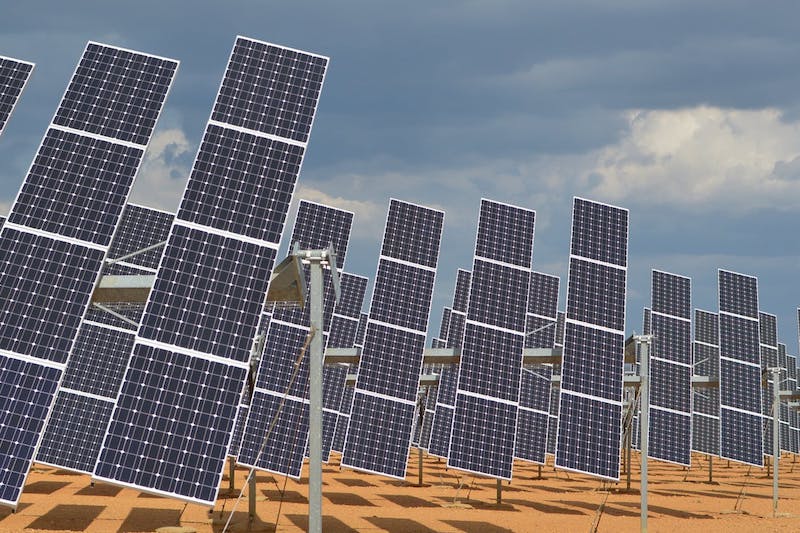
On vast stretches of farmland, a sea of tall wind turbines spinning gracefully against the sky, capturing the energy of the wind to convert it into electricity. These turbines, ranging from small installations for individual farms to larger ones transmitting power to the grid, are becoming more common.
More farmers are leasing parts of their land for wind farm developers or installing their own turbines to produce energy directly to reduce input costs for their farm. For instance, a dairy farm might utilize wind energy to power milking machines, cooling systems, and other operational facilities. In some innovative setups, smaller turbines are used to irrigate cash crops, reducing reliance on traditional energy sources.
The integration of wind energy into agriculture offers a two-fold advantage. Economically, farmers who lease their land to wind farm operators can secure a stable, long-term source of income that's independent of crop yields or market fluctuations. On the environmental front, wind energy stands above the rest as a clean, renewable energy source. By replacing or reducing the reliance on fossil fuels, wind turbines contribute significantly to lowering the carbon footprint of a farm, aiding in the fight against climate change.
The union between wind turbines and agriculture represents a progressive step towards a more sustainable future. Not only do wind turbines take up minimal ground space – allowing farming activities to continue largely undisturbed – but they also contribute to local biodiversity, with the spaces between turbines offering an opportunity to rewilding land.
As energy demands increase globally, farms equipped with wind energy infrastructure are positioned at the forefront of this sustainable energy transition.
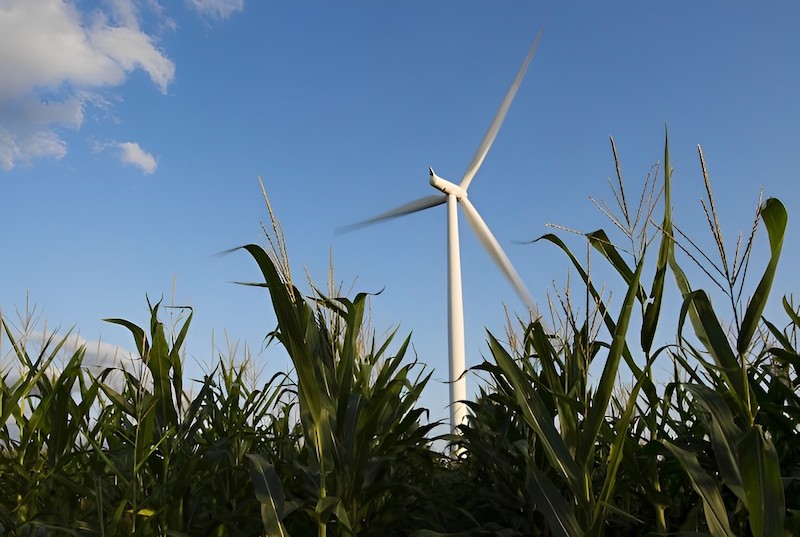
At the heart of many farms lies a potent, often underutilized source of energy: organic waste. Bioenergy, derived from biological materials like crop residue, can be harnessed directly from crops, manure, and agricultural leftovers.
Anaerobic digesters are frequently employed on livestock farms, converting waste like manure into biogas, a mixture of methane and carbon dioxide. This biogas can be burned to produce heat or electricity, or processed to yield biomethane, suitable for heating, electricity generation, or to power farm machinery including vehicles.
On crop farms, residues like straw or corn husks can be converted into biofuels or bioproducts, ensuring that no part of the crop goes to waste.
Bioenergy balances the scales of profit and environment by offering a holistic solution for farms, addressing both economic and environmental concerns. By converting waste products into energy, farms can significantly reduce disposal costs while simultaneously generating a reliable energy source. This not only creates a new revenue stream but also lessens the dependency on external energy providers.
Environmentally, the use of bioenergy reduces greenhouse gas emissions, especially when it replaces fossil fuels. Methane, a potent greenhouse gas typically emitted from manure, is captured and utilized in anaerobic digestion, reducing output of a greenhouse gas. Furthermore, digestate can be returned to the soil promoting nest season crop growth.
The integration of bioenergy into agriculture underscores the move towards a more circular agricultural model, where outputs from one process become inputs for another. This self-sustaining approach minimizes waste, maximizes efficiency, and highlights the symbiotic relationship between various farm operations.
By embracing bioenergy, farms are not just harnessing power but are also championing a vision of sustainability, resource efficiency, and environmental stewardship. The age-old farming adage, "Waste not, want not," finds renewed relevance in the era of bioenergy.
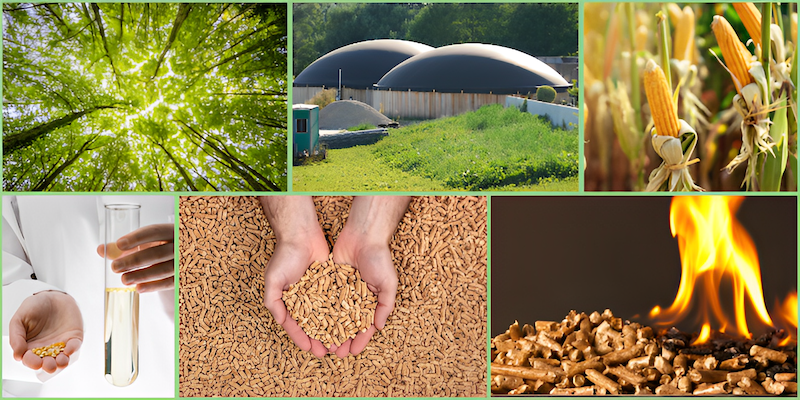
Micro hydropower systems, distinct for their capacity to generate up to 100 kW of electricity, are a perfect fit for farms with access to flowing water resources. These systems harness the energy of flowing water - be it from a stream, river, or even irrigation channels - to turn a turbine or a water wheel.
A classic example of this would be a farm located near a hilly or mountainous region where streams flow with enough force and volume. With the implementation of a micro hydropower system, the farm can convert this kinetic energy into electricity, which can then be used for various operations like powering lights and machinery.
The financial and environmental benefits of micro hydropower are compelling.
Once installed, these systems offer a continuous source of energy with minimal operational costs, as they don't rely on fuel of any kind. For farms situated in remote areas where grid connectivity is an issue, micro hydropower can be a game-changer, providing reliable and uninterrupted power.
Environmentally, micro hydropower is a clean energy source. It produces electricity without emitting greenhouse gases and, when designed carefully, has minimal impact on aquatic ecosystems.
The concept of using water to power machinery isn't new—water wheels have been a part of agricultural landscapes for centuries. However, modern micro hydropower systems bring efficiency, sustainability, and adaptability to the table at a fraction of the size.
By reintroducing water-driven energy into the farm setting, we see a blend of tradition and innovation. This sustainable energy approach, rooted in history but refined with modern technology, not only reduces a farms carbon footprint but also brings it one step closer to energy independence and resilience.

Geothermal energy utilizes the Earth's internal heat, and farms with access to these underground thermal reservoirs can leverage this energy in various ways.
One of the most common applications on farms is geothermal heating systems. For instance, in greenhouses, geothermal energy can be used to provide consistent warmth, ensuring optimal growth conditions for plants throughout the year, irrespective of external weather fluctuations.
Geothermal systems can also be integrated into farm operations to heat water for various processes, or even to warm animal barns, providing livestock with a comfortable environment during the winter.
From a financial perspective, once a geothermal system is set up, the operational costs are relatively low. This is because the Earth's heat is a consistent and reliable energy source, unaffected by weather patterns or seasonal changes that may affect other renewables like solar or wind. This consistent energy source can lead to significant savings over time, as farms reduce their reliance on traditional heating methods and fuels.
Environmentally, geothermal systems have a light footprint. They produce energy with minimal emissions and, unlike combustion-based systems, do not release significant amounts of greenhouse gases, which helps in the battle against climate change.
While geothermal energy might seem like a product of modern technological advancements, civilizations have been using Earth's natural warmth for millennia, from ancient Roman bathhouses to Iceland cooking.
In the era of modern agriculture, integrating geothermal systems signifies the fusion of ancient knowledge with cutting-edge technology. Farms equipped with geothermal herald a future where agriculture and eco-friendly energy solutions coexist harmoniously, accentuating the drive towards sustainable agriculture.
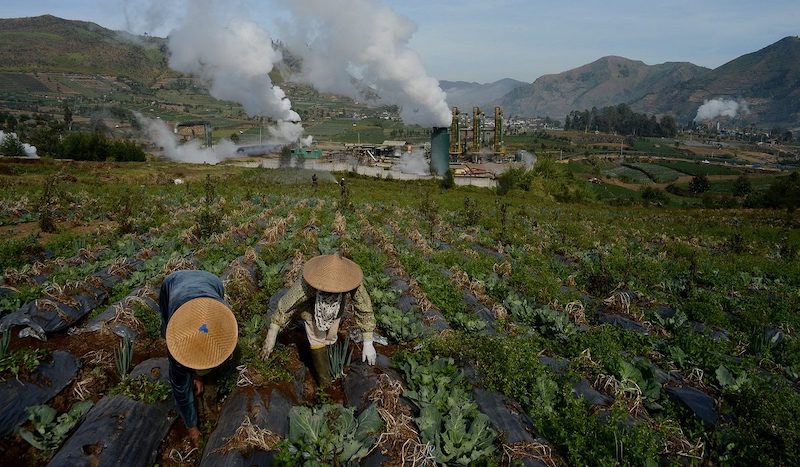
Net-zero agriculture refers to farming operations that achieve a balance between the amount of greenhouse gases emitted and the amount sequestered or offset. This involves reducing emissions, for instance by replacing fossil fuels with renewable energy, and enhancing carbon sequestration, for example through the cultivation of energy crops or the application of biochar.
Achieving net-zero agriculture is crucial to combat climate change. As the global population continues to grow and demand for food rises, we need to find ways to produce food sustainably and without contributing to greenhouse gas emissions. A marriage between renewable energy in agriculture offers a viable pathway towards this goal.
The United Nations' Sustainable Development Goals (SDGs) are a blueprint for achieving a better and more sustainable future. They cover various areas, from ending poverty and hunger to promoting clean energy and climate action.
Renewable energy in agriculture contributes to several of these goals. It promotes clean energy (Goal 7) by replacing fossil fuels with renewable sources. It helps combat climate change (Goal 12) by reducing greenhouse gas emissions. It also contributes to responsible consumption and production (Goal 12) by promoting the circular economy and waste-to-energy technologies.
Renewable Energy Certificates (RECs) are a type of market-based instrument that certifies the holder has generated a certain amount of renewable energy. They serve as a proof of production and can be sold or traded, providing an additional income stream for farmers that produce renewable energy.
RECs not only incentivize the production of renewable energy but also help track and verify its generation. They play a crucial role in promoting renewable energy in agriculture and achieving renewable energy targets.
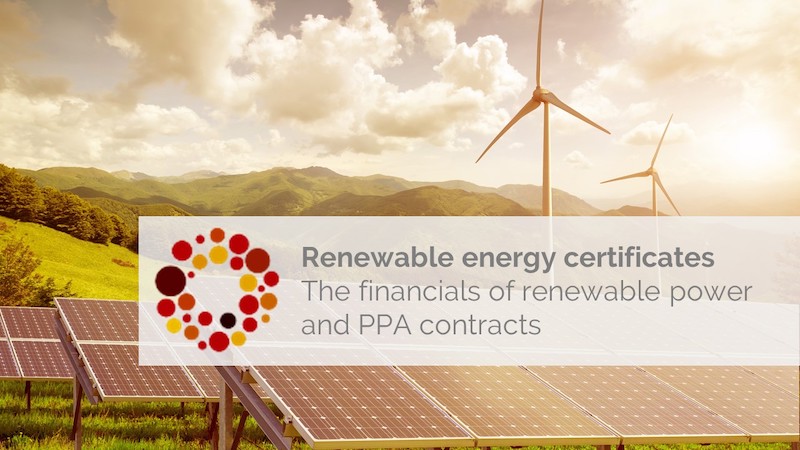
The future of renewable energy in agriculture looks bright. As the world grapples with climate change and the need to adopt sustainable crop production methods, renewable energy offers a solution for the agricultural sector that makes both financial and environmental sense.
From solar and wind power to bioenergy and geothermal energy, these clean, sustainable sources can power our farms, reduce emissions, and promote resilience and productivity.
The journey towards renewable energy in agriculture is not without challenges. It requires investments in infrastructure and technology, changes in how we grow food, and supportive policies and incentives. However, the benefits – for farmers, consumers, and the planet – are clear and compelling.
As we move forward, let's embrace renewable energy in agriculture as a key part of our sustainable future. Let's harness the power of the sun, the wind, and the soil to grow our food and care for our planet. Let's transform agriculture, from sun to soil, with renewable energy.